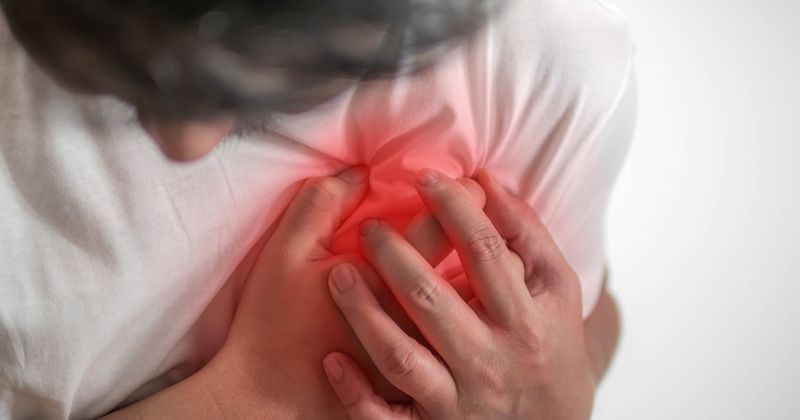Advanced HF, sudden cardiac death account for about 20% of deaths 2 years after TAVR
Key takeaways:
- Among patients who died 2 years after TAVR, about 20% had deaths attributed to advanced heart failure or sudden cardiac death.
- Researchers identified several predictors of CV death after TAVR.
At 2 years after transcatheter aortic valve replacement with newer-generation devices, approximately 20% of deaths were attributed to advanced HF or sudden cardiac death, researchers reported.
Factors such as the expansion of TAVR indications to patients at lower risk have “changed the comorbidity burden of TAVR patients and has most likely had an impact on the causes of death and risk factors after TAVR,” Jules Mesnier, MD, from the Quebec Heart and Lung Institute, Laval University, Quebec City, Canada, and colleagues wrote. “However, scarce data exist on this topic with the use of newer-generation TAVR devices. The objective of this study was to describe the causes of cardiac death after TAVR with newer-generation devices and to assess the incidence and predictors of death from advanced HF and sudden cardiac death.”

Image: Adobe Stock
Mesnier and colleagues analyzed data from 5,421 consecutive patients (mean age, 81 years; 44% women) who underwent TAVR with next-generation devices (75.7% balloon-expandable, the rest self-expanding).
After a median follow-up of 2 years, 18% of patients had died, of whom 50.8% died from CV causes, Mesnier and colleagues wrote.
Among the deaths, 11.6% were attributed to advanced HF and 7.5% were attributed to sudden cardiac death, according to the researchers.
Predictors of CV death
Mesnier and colleagues determined that the following were independent predictors of HF-related death in the cohort:
- atrial fibrillation (HR = 2.17; 95% CI, 1.47-3.22; P < .001);
- prior pacemaker (HR = 1.79; 95% CI, 1.1-2.92; P = 0.01);
- reduced left ventricular ejection fraction (HR = 1.08 per 5% decrease; 95% CI:, 1.01-1.14; P = .02)
- transthoracic approach (HR = 2.5; 95% CI, 1.37-4.55; P = .003); and
- new-onset persistent left bundle branch block (HR = 1.85; 95% CI, 1.14-3.02; P = .01).
The researchers also found that the following were independent predictors of sudden cardiac death in the cohort:
- diabetes (HR = 1.81; 95% CI, 1.13-2.89; P = .01);
- chronic kidney disease (HR = 1.72; 95% CI, 1.02-2.9; P = .04);
- needing a valve-in-valve procedure (HR = 2.17; 95% CI, 1.01-4.64; P = .04);
- transarterial nontransfemoral approach (HR = 2.23; 95% CI, 1.23-4.48; P = .01); and
- periprocedural ventricular arrhythmia (HR = 7.19; 95% CI, 2.61-19.76; P < .001).
“These findings suggest the importance of closer monitoring and follow-up, involving HF and electrophysiology specialists, for patients with these risk factors,” Mesnier and colleagues wrote. “In selected patients, advanced therapies like cardiac resynchronization, physiological pacing, continuous electrocardiogram monitoring and implantable cardioverter defibrillator placement could potentially provide benefits. Overall, this study provides valuable insights to identify patients at highest risk of HF-related deaths or sudden cardiac death after TAVR in contemporary practice and may contribute to improve their clinical management.”
Addressing stumbling blocks sooner

In a related editorial, Gilbert H.L. Tang, MD, MSC, MBA, surgical director of the structural heart program at the Mount Sinai Health System and professor in the department of cardiovascular surgery at Icahn School of Medicine at Mount Sinai, and Parasuram Krishnamoorthy, MD, assistant director of the structural heart program and assistant professor of medicine at the Mount Sinai Hospital and Mount Sinai Heart, wrote that the observational nature of the study means there are potential confounders, but “this study emphasizes the importance of operator knowledge and experience to minimize procedural complications, a multidisciplinary approach when evaluating patients pre- and post-TAVR, and the involvement of heart failure specialists and electrophysiologists to help optimize both short- and long-term outcomes. This also paves the way for randomized controlled trials with a longer follow-up period assessing the incidence and predictors of cardiac death post-TAVR to help develop care pathways and identify at-risk patients at an earlier stage. HF and sudden cardiac death are indeed the stumbling blocks after TAVR and should be addressed sooner rather than later.”
